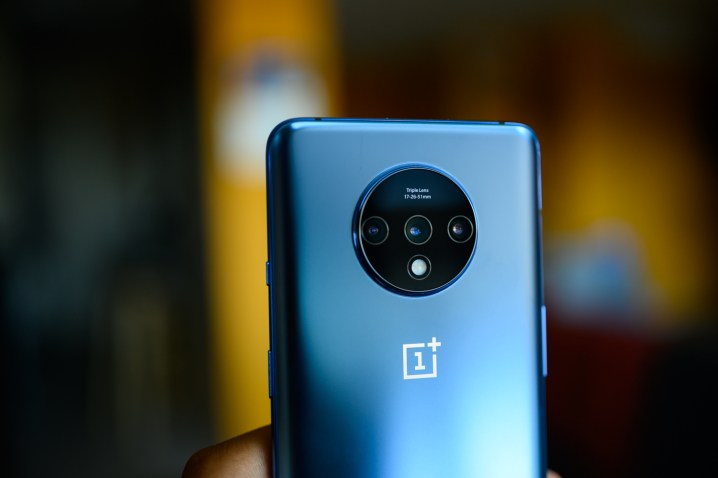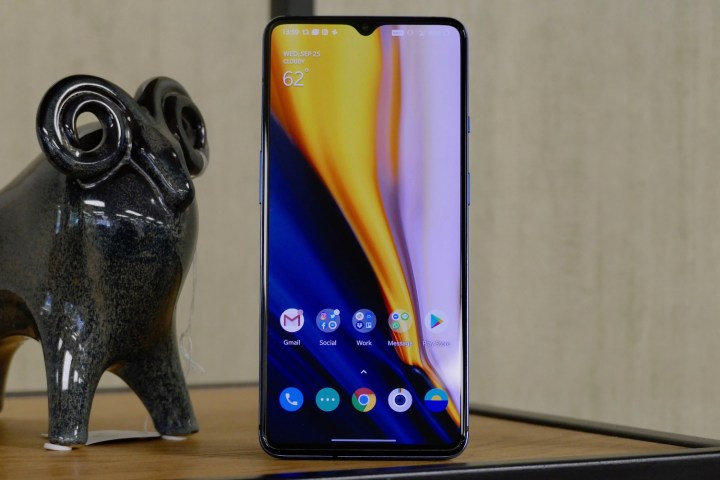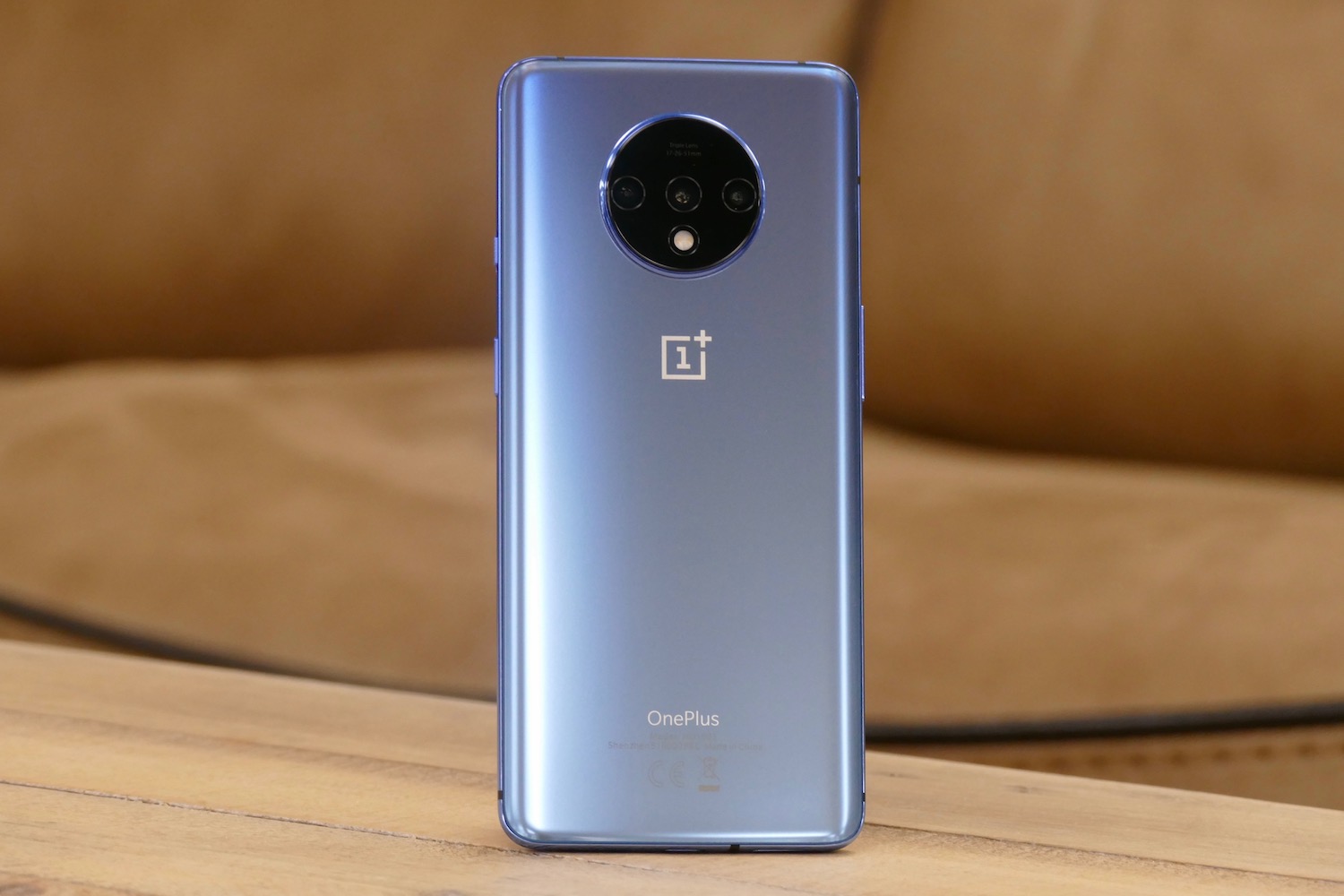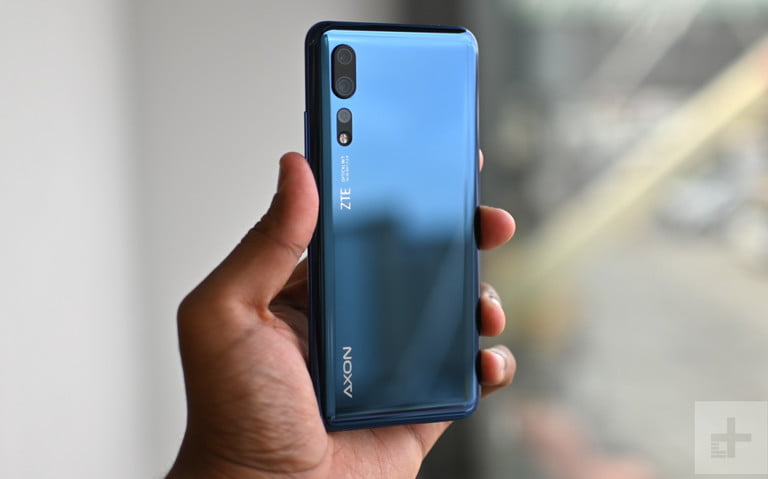Why drop $1,000 or more when you can get a comparable spec sheet in a phone that costs half the price? OnePlus has billed its phones as flagship killers for years, but it’s not the only bargain in town. We decided to pit the $600 OnePlus 7T up against our current top budget phone pick, the $500 Asus Zenfone 6, and just to throw in a wild card, the $550 ZTE Axon 10 Pro. If you just want the most powerful package of hardware for your cash and the brand is secondary, these are some of the phones you should be looking at. But which is right for you? Let’s find out.
Specs
| OnePlus 7T |
Asus Zenfone 6 | ZTE Axon 10 Pro |
|
| Size | 160.9 × 74.4 × 8.13 mm (6.33 × 2.92 × 0.32 inches) | 159.1 × 75.4 × 9.2mm (6.26 × 2.97 × 0.36 inches) | 159.2 × 73.4 × 7.9mm (6.27 × 2.89 × 0.31 inches) |
| Weight | 190 grams (6.7 oz) | 190 grams (6.7 ounces) | 175 grams (6.17 ounces) |
| Screen size | 6.55-inch Fluid AMOLED | 6.4-inch IPS LCD | 6.47-inch AMOLED |
| Screen resolution | 2400 × 1080 pixels (402 pixels per inch) | 2340 × 1080 pixels (403 pixels-per-inch) | 2340 × 1080 pixels (403 pixels-per-inch) |
| Operating system | Android 10 (with Oxygen OS) | Android 9.0 Pie (with Zen UI 6) | Android 9.0 Pie (with MiFavor) |
| Storage space | 128GB, 256GB | 64GB, 128GB, 256GB | 128GB, 256GB |
| MicroSD card slot | No | Yes | Yes |
| Tap-to-pay services | Google Pay | Google Pay | Google Pay |
| Processor | Qualcomm Snapdragon 855 Plus | Qualcomm Snapdragon 855 | Qualcomm Snapdragon 855 |
| RAM | 8GB | 6GB, 8GB | 6GB, 8GB, 12GB |
| Camera | Triple-lens 48-megapixel, 16MP ultra-wide angle, and 12MP telephoto rear, 16MP front | Dual 48MP and 13MP front and rear camera | Triple lens 48MP Wide, 20MP Ultra Wide, and 8MP Telephoto rear, 20MP front |
| Video | 2,160p at 60 fps, 1,080p at 240 fps, 720p at 480 fps | 2160p at 60 frames per second, 1080p at 240 fps, 720p at 480 fps | 2160p at 30 frames per second, 1080p at 30 fps |
| Bluetooth version | Bluetooth 5.0 | Bluetooth 5.0 | Bluetooth 5.0 |
| Ports | USB-C port | 3.5mm headphone jack, USB-C | USB-C |
| Fingerprint sensor | Yes, in-display | Yes (back) | No |
| Water resistance | No | No | IP68 |
| Battery | 3,800mAh
Fast charging (Warp) |
5,000mAh
Fast charging (18W charger) |
4,000mAh
Fast charging (18W charger) Qi wireless charging |
| App marketplace | Google Play Store | Google Play Store | Google Play Store |
| Network support | T-Mobile, AT&T, Verizon, Sprint | T-Mobile, AT&T | T-Mobile, AT&T |
| Colors | Frosted Silver, Glacier Blue | Midnight Black, Twilight Silver | Blue |
| Price | $599 | $500 | $549 |
| Buy from | OnePlus | Asus | ZTE |
| Review score | 4 out of 5 stars | 4 out of 5 stars | 3.5 out of 5 stars |
Performance, battery life, and charging
The OnePlus 7T establishes a clear advantage straight out of the gate here with a Snapdragon 855 Plus processor, instead of the plain old 855 you’ll find in the other two phones. It’s significantly faster in benchmarks, though we don’t think there are many real world situations right now where you’ll notice a big difference. All three have plenty of RAM and storage, though the OnePlus 7T lacks a slot to add a MicroSD card, which the other two have.
In the battery department, the Asus Zenfone 6 brings out the big guns with a whopping 5,000mAh capacity — a full 1,000mAh more than the ZTE Axon 10 Pro and 1,200mAh more than the OnePlus 7T. All three will see you safely through an average day, but the Zenfone 6 can manage a second day between charges. Both the ZTE and Asus phones charge at 18W maximum, which is plenty fast and in line with the latest iPhones and Pixels, but the OnePlus can charge a little faster thanks to its proprietary Warp charge support which promises 70% charge in just 30 minutes. Only the ZTE Axon 10 Pro supports Qi wireless charging.
It’s tough to pick a winner here as there are highs and lows across the board, but we’re giving the OnePlus 7T the nod — that extra processing power will tell over time and the fast charging speed is a real convenience.
Winner: OnePlus 7T
Design and durability
- 1. OnePlus 7T
- 2. Asus ZenFone 6
- 3. ZTE Axon 10 Pro
OnePlus has gone for a new look in the 7T with a round camera module that protrudes a little more than we’d like. On the plus side, the curved glass has a metallic sheen and an anti-glare coating and it’s comfortable to hold. Around front, the 7T has thin bezels around a tall screen and a small teardrop notch at the top for the front-facing camera. The Asus Zenfone 6 has the most innovative design here with an all-screen front and a camera module that can rotate, so your main camera can pop up and work as a selfie camera. The glass back is more dated-looking with a fingerprint sensor recessed in the middle — both the other two have in-display fingerprint sensors. The Asus Zenfone 6 is also very thick, which the price you pay for a beefy battery. The ZTE Axon 10 Pro lacks a distinct identity and we find the design a little dull. The glass back in blue is attractive enough with a camera module at the top left. The front is almost all screen with a small teardrop notch at the top for the front-facing camera.
While all three are glass front and back, so will definitely want cases, the ZTE Axon 10 Pro boasts an IP68 rating that means it can survive submersion in shallow water for short periods. The mechanized camera module is an extra durability concern for the Asus here. This category is another mixed bag, but we think the OnePlus 7T is the best-looking.
Winner: OnePlus 7T
Display

There isn’t a big size difference and all three screens have a very similar pixel density, but we can discount the Asus here because it has an LCD rather than an OLED — you get far superior contrast and more vibrant colors with OLED. The OnePlus 7T beats the ZTE Axon 10 Pro because it also boasts a higher 90Hz refresh rate, instead of the usual 60Hz, which means everything feels silky smooth.
Winner: OnePlus 7T
Camera

The great news here is that all three of these phones have top class camera hardware packed into them and offer great results for the money. The Asus Zenfone 6 cleverly offers the same excellent dual-lens camera front and back thanks to that motorized module; it combines a 40-megapixel main sensor with a 13-megapixel ultra-wide-angle lens. However, the OnePlus 7T and the ZTE Axon 10 Pro kick things up a notch by adding a third lens to their main cameras — a telephoto lens which allows for zoom. These are some seriously versatile cameras. When we compared the ZTE Axon 10 Pro to the OnePlus 7 Pro, we found that OnePlus offered warmer tones and generally brighter pictures, with less grain and better contrast. Since the 7T has a slightly improved camera over the 7 Pro, we’re giving it the win here, but it’s a fairly close-run thing.
Winner: OnePlus 7T
Software and updates

It’s pleasing to find that all three of these phones have a relatively light user interface on top of Android and don’t stray too far from Google’s vision. Oxygen OS on the OnePlus probably contains the most customization options and extras, but it’s not too much.
The OnePlus 7T also scores an easy win here because it’s the only one that currently runs Android 10 and OnePlus has an excellent update record. We do expect the other two to get Android 10 soon, though.
Winner: OnePlus 7T
Special features
Cheaper phones often scrimp on extras, so there aren’t a lot of special features to point to. The OnePlus 7T has some unique software options like Zen Mode, which quietens down notifications for a while. You could also maybe point to the Warp charge here or the high refresh rate in the screen. The Asus Zenfone 6 has that unusual flip round camera, which is going to be especially important for big selfie fans, and it’s the only one with a headphone jack. The ZTE Axon 10 Pro boasts two important features missing from the other two: Wireless charging and waterproofing.
Winner: Tie
Price and availability
The OnePlus 7T is the most expensive of the bunch at $600 and it’s available from October 18. The Asus Zenfone 6 is a full $100 cheaper at $500 and the ZTE Axon 10 Pro falls in the middle at $550. While the OnePlus 7T will work with all the major carriers, the other two are going to work best with AT&T or T-Mobile.
Overall winner: OnePlus 7T
It’s a clean sweep for the OnePlus 7T, but in a lot of these categories, the win was narrow. We still think the Asus Zenfone 6 is a great bargain at a full $100 less, but with a faster processor, superior screen, better camera, and the latest version of Android, the OnePlus 7T is the phone we would pick.





